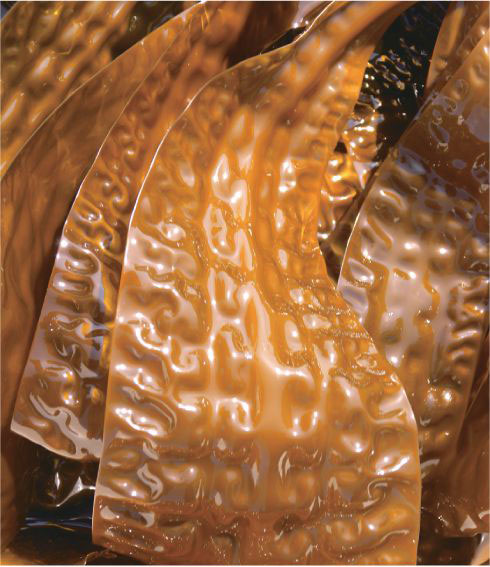The Strong Stickiness of Water-Soluble Polysaccharide
More than 95% of the natural kelp distributed in Japan is produced in Hokkaido. Typically the kelp of the Laminaria family is commonly used in cooking, but there are several types of kelp. Kelp of the genus Laminaria is harvested in a wide area along the coast of Hokkaido, but Gagome kelp of the genus Kjellmaniella crassifolia is an endemic species found only in the sea around Hakodate. The viscous polysaccharide, which is the thickening ingredient, is mainly fucoidan, alginic acid, and laminaran, and has a strong stickiness. Due to the decline in natural resources, we only use specially
ultivated kelp in joint research with Hokkaido University, and can be displayed as ``Hokkaido University Marine Cultivated Gagome Kelp.''


